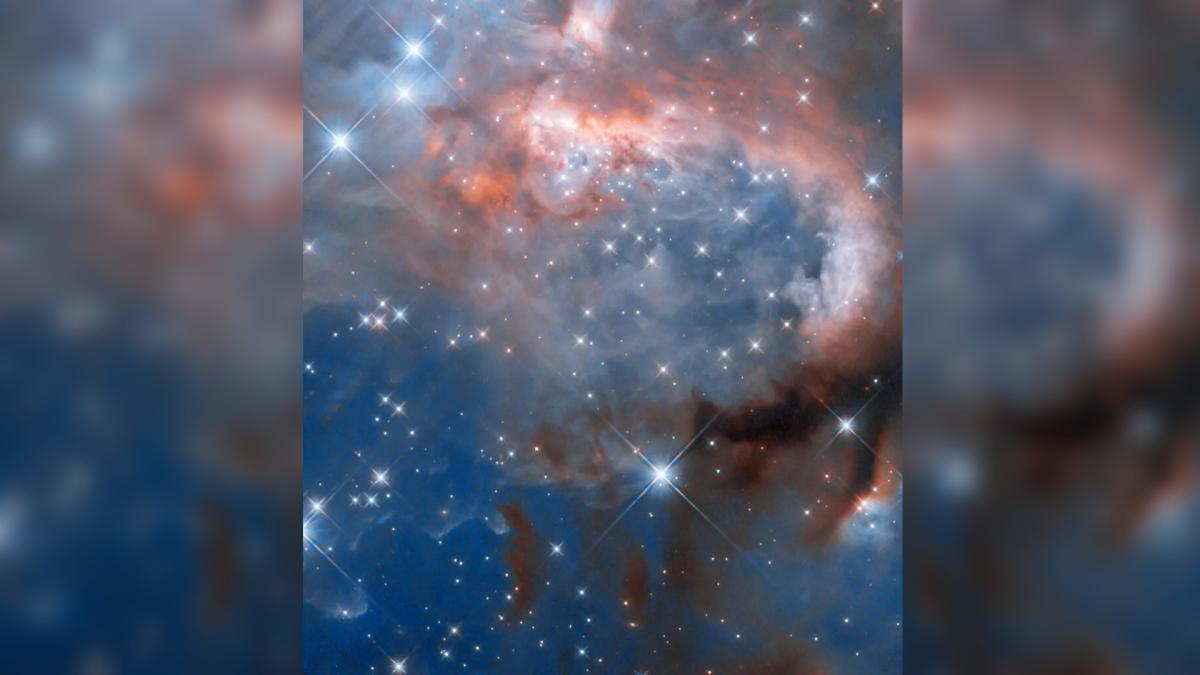The Hubble Space Telescope has snapped a stunning new photo of infant stars nestled in a glowing cocoon of gas and dust.
The bright clouds of dust and gas captured in the new Hubble photo represent a nebula, which is a dense interstellar region where new stars form. This particular nebula, known as RCW 7, is located just over 5,300 light-years from Earth in the constellation Puppis.
High-energy ultraviolet (UV) radiation emitted by the young, massive stars ionizes hydrogen in the nebula, creating the soft pinkish glow among the curling clouds. This region of activity is known as a H II region, according to a statement from NASA.
“Under the influence of gravity, parts of these molecular clouds collapse until they coalesce into very young, developing stars, called protostars, which are still surrounded by spinning discs of leftover gas and dust,” NASA officials said in the statement. “The protostars forming in RCW 7 are particularly massive, giving off strongly ionizing radiation and fierce stellar winds that transformed the nebula into a H II region.”
The new Hubble photo, which was released on June 21, is part of a study on a massive and very young stellar pair, or protostellar binary, named IRAS 07299-1651, which is tucked in toward the top of the nebula.
The photo was taken using Hubble’s Wide Field Camera 3 in near-infrared light, which features relatively long wavelengths that allow the light to pass through much of the gas and dust in RCW 7.
Related: Celebrating 30 years of the Hubble Space Telescope
RELATED STORIES:
— The Hubble Space Telescope is old. Here’s NASA’s new plan to keep it alive through 2035
— Hubble telescope celebrates 34th anniversary with an iridescent Dumbbell Nebula (image)
— Supernova-filled galaxy dazzles in new Hubble Telescope image
“The creation of an H II region marks the beginning of the end for a molecular cloud like RCW 7. Within only a few million years, radiation and winds from the massive stars will gradually disperse the nebula’s gas — even more so as the most massive stars come to the end of their lives in supernova explosions,” NASA officials said in the statement. “New stars in this nebula will incorporate only a fraction of the nebula’s gas; the rest will spread throughout the galaxy to eventually form new molecular clouds.”
The new image also captures stars located in the telescope’s line of sight between the nebula and our solar system. These stars appear larger because they lie in the foreground of the image, and are not part of the nebula.

Dr. Sarah Adams is a scientist and science communicator who makes complex topics accessible to all. Her articles explore breakthroughs in various scientific disciplines, from space exploration to cutting-edge research.







